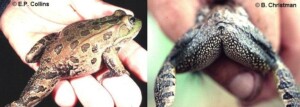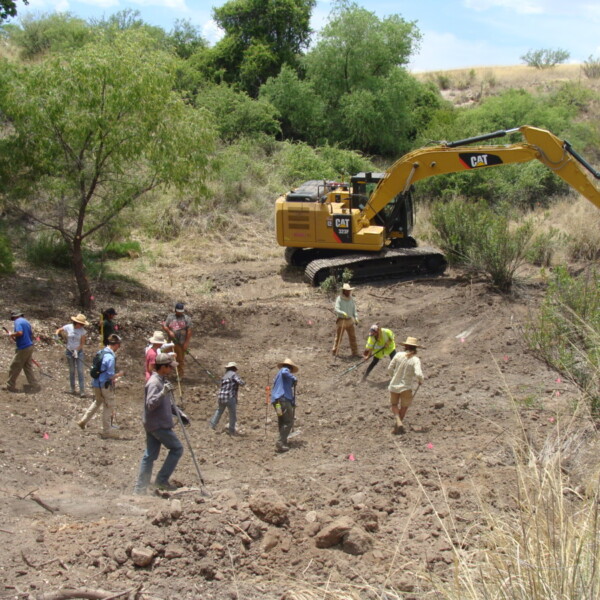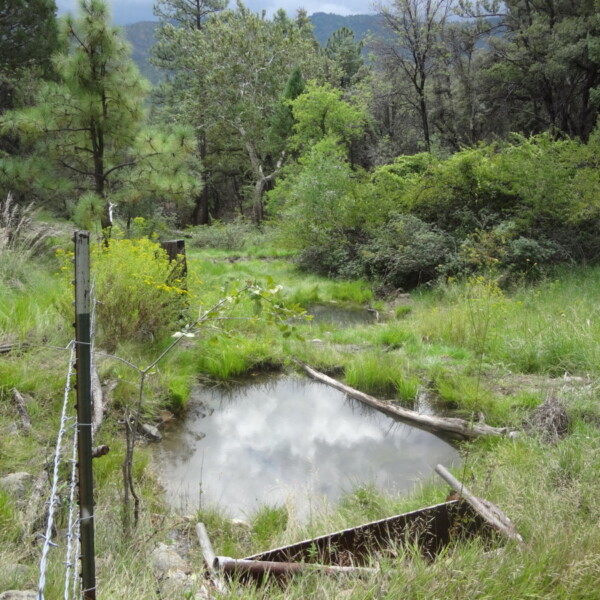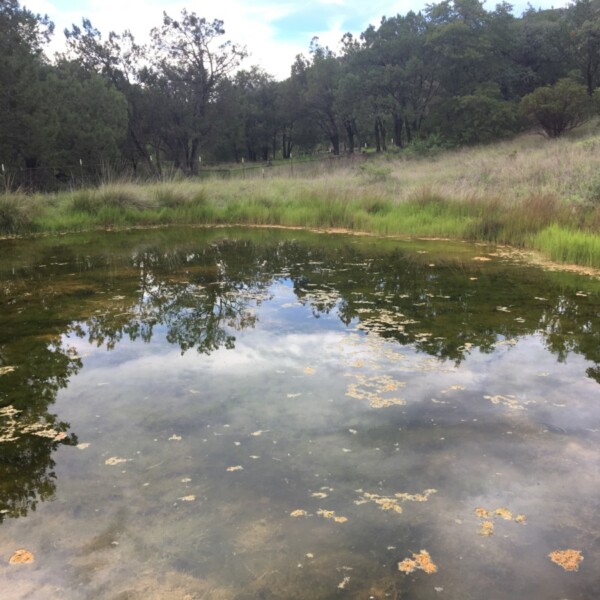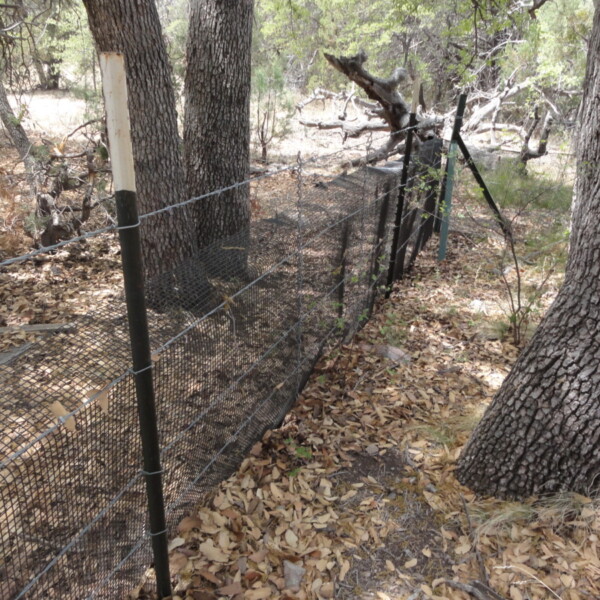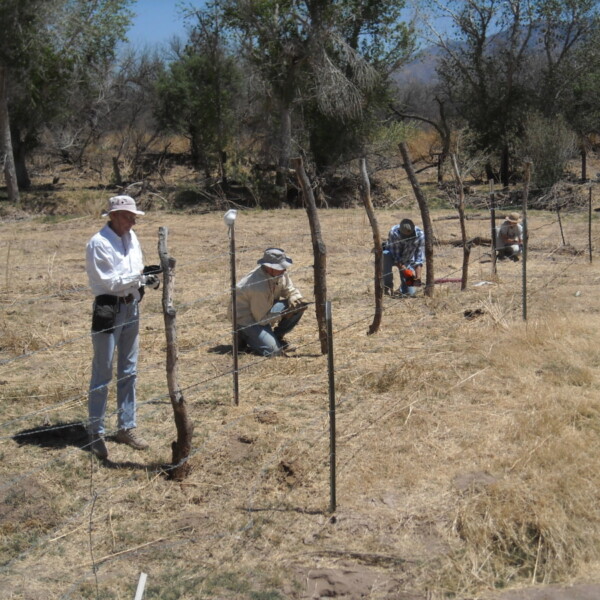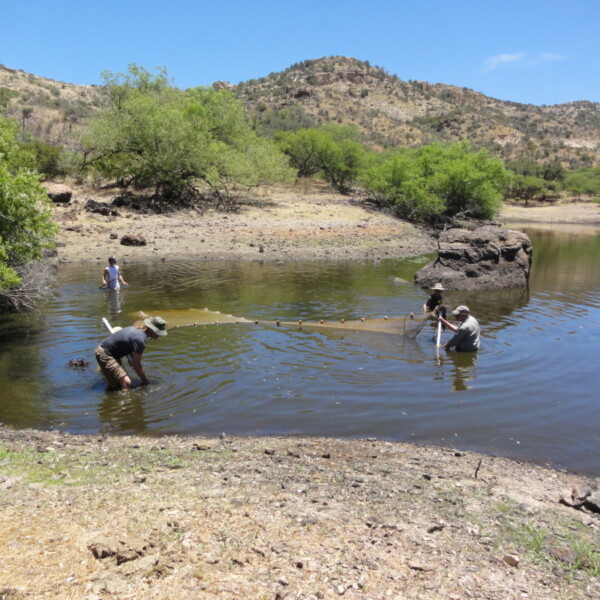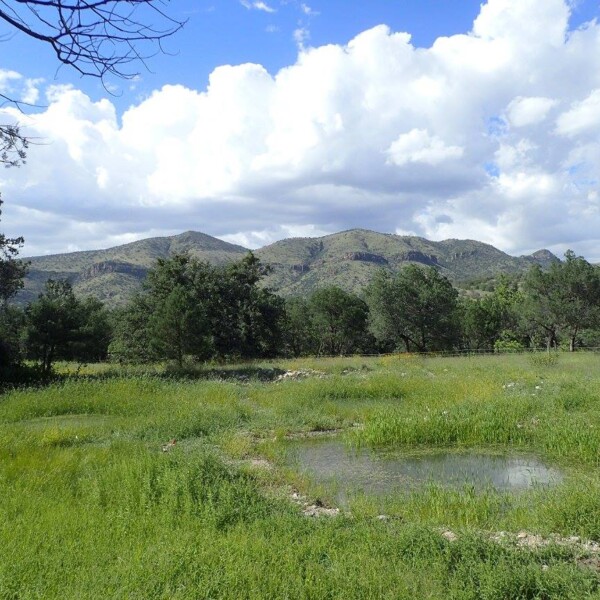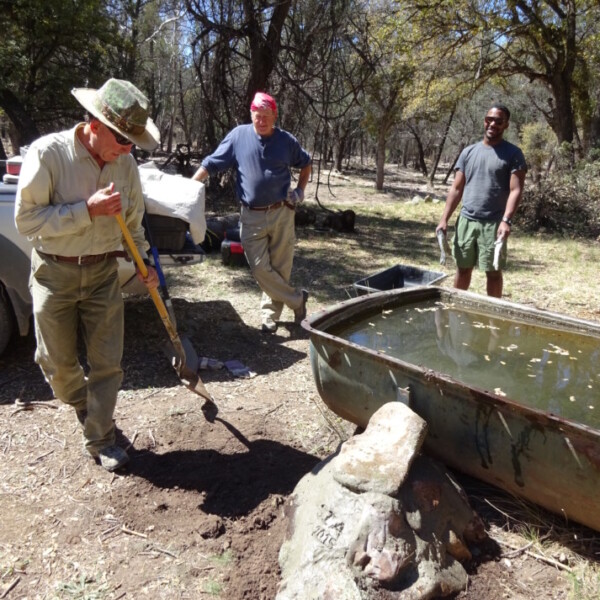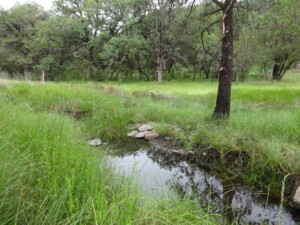
On this Endangered Species Day, we celebrate the Chiricahua leopard frog (Lithobates chiricahuensis) and efforts to protect this Sky Island endemic species. Being an endemic means that they are only found in this region – the Sky Islands and along the Mogollon Rim!* They live in the mountains and highlands of Arizona, New Mexico, Sonora, and Chihuahua, usually at elevations between 3500 – 8500′.
Where do they live?
They inhabit perennial (year-round) water sources with good levels of oxygen and aquatic plants. Springs are one of the most vital habitats for these frogs, since most perennial water sources in the region are springs. They can also be found in other water sources like streams, and human-made ponds, like stock tanks.
What do they look like?
They are olive to dark green in color, with charcoal spots. CLFs can be confused with our two other leopard frogs – lowland leopard frogs and plains leopard frogs, but experienced surveyors can tell them apart. Their call sounds like a snore.
Fun Fact: Chiricahua leopard frogs are quite long-lived: they can live up to 14 years in the wild!
How are they doing?
The Chiricahua leopard frog is listed as Threatened under the Endangered Species Act. It’s estimated that they have disappeared from at least 75% of the water sources it once inhabited. Damage to water sources, including drainage of water, alteration, and grazing, is one of the main reasons for this disappearance. Like many amphibians, chytrid fungus is a significant threat to the species. Bullfrogs and non-native fish like sunfish are also major threats to these frogs because these predators eat the Chiricahua leopard frog tadpoles and adults.
What is SIA doing for them?
Over the last decade, Sky Island Alliance conducted stewardship projects at twenty sites to create, improve, and expand habitat for Chiricahua leopard frogs in the Chiricahua, Huachuca, Peloncillo, Santa Rita, and Pajarita Mountains, plus Las Cienegas National Conservation Area. We’ve built new ponds, renovated existing ponds, planted aquatic plants, installed ramps to allow frogs to access existing water sources like troughs, removed non-native bullfrogs, and built fences to exclude bullfrogs and cattle from these sensitive sites.
With our help and the help of our many governmental and non-profit partners, hopefully the Chiricahua leopard frog can repatriate some of those places from which it is missing, and thrive where it already occurs!
* The USFWS still considers the branch of leopard frog that lives along the Mogollon Rim in central Arizona and western New Mexico to be L. chiricahuensis, but recent literature has found these frogs may be more properly classified as L. fisheri (Hekkala et al. 2011), a species thought to be extinct that once lived in springs in Las Vegas, Nevada. This would make the Chiricahua leopard frog endemic to just the Sky Island region.
Sources

